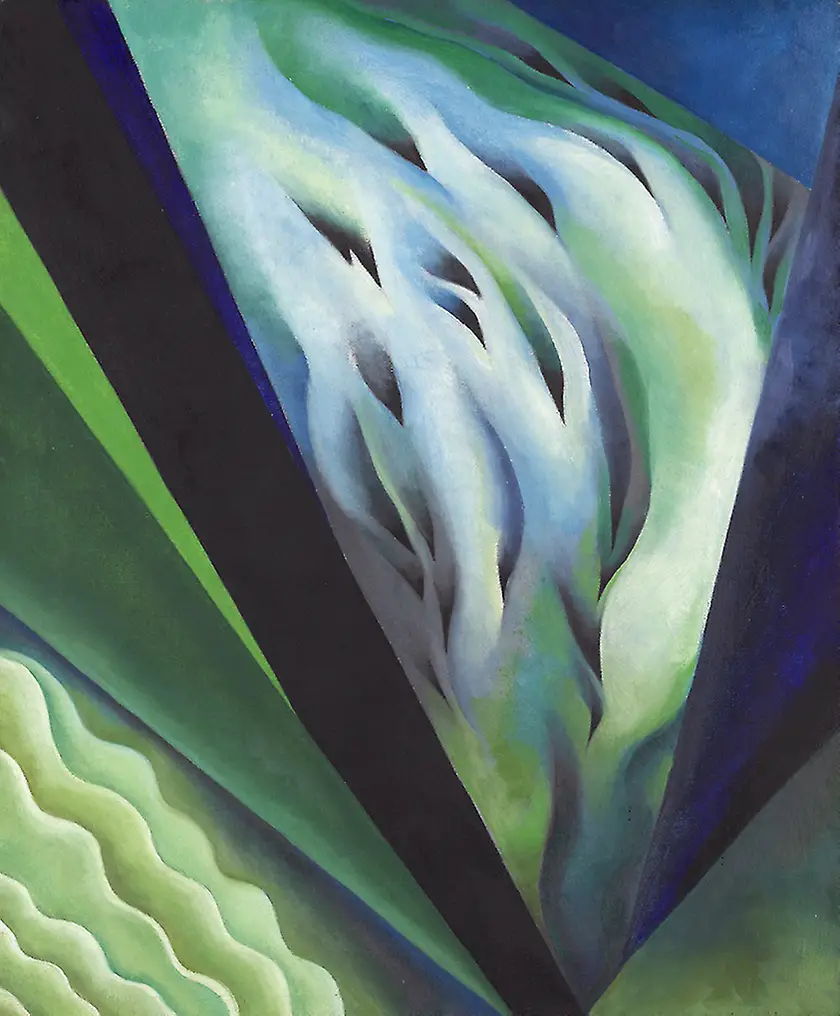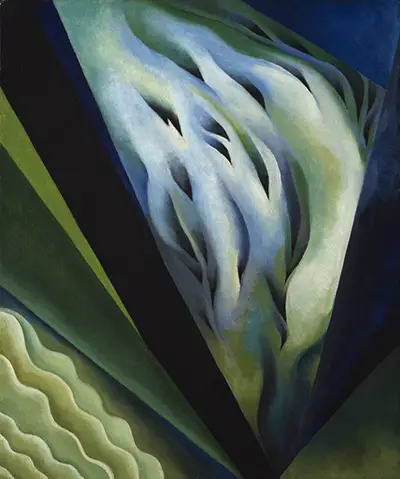Abstraction and symbolism has been used by artists to represent objects in a visual form. Sound can also be represented through colour and this abstract method is relatively new to art, looking back through the past movement. Classical music and the teachings of fellow artist Wassily Kandinsky are believed to be behind the work of O'Keeffe in Blue and Green Music. Specific colours in this painting would refer to certain sounds, perhaps even musical instruments. Displaying sound as a visual form is an expressive form of art which fits well with the 20th century modern art movements. Blues and greens dominate this work and the way in which these colours work together would suit a collection of sounds producing a beautiful symfony.
There have also been a number of artists who have also played musical instruments, with Georges Braque being an accomplished musician who would actually use his own instruments within various still life depictions. O'Keeffe's approach, though, was to concentrate on the sounds themselves, rather than the items that produced them. She was quoted around the time as saying that her intention was to "the idea that music could be translated into something for the eye." The undoubted influence of Wassily Kandinsky would have been from his theories on art and sound together which came around a decade earlier and would most likely have been translated into English at around the same time. The first part of the 20th century was full of artists taking the lead from literature, with many of the Surrealists, for example, producing work that was inspired by the psycho-analytical work of Freud and his comparisons between the conscious and sub-conscious mind.
The composition found here appears organic, in a similar style to her oversized flower paintings, such as Black Iris and Jimson Weed. There are angled components which are straight in some cases, but also beautifully rippled in others. There appears a fine balance here between natural and planned, but what does it represent? And where does the sound exist here? The colour scheme is also contrasting, with dark tones and light, bright colours found in perfect harmony. As an abstract piece, it is undeniably beautiful, but one is still left considering how the title of the painting, and the subject of music is involved. The answers lie in researching her other paintings on this topic, as well as her own comments, plus those of experts on her career. Only then can we be more sure about the composition in front of us. She would later confirm that the waves were sounds, and that this was the only way she could find to interpret and deliver sounds in a visual way.
Blue and Green Music by Georgia O'Keeffe can now be found in the collection of the The Art Institute of Chicago, along with a number of other pieces from this artist. Those with broader tastes will find much to enjoy within this art institution, with both American art and that from abroad both being very well represented. Institutions such as this one tend to have such a large collection that it is impossible to really summarise it with just a few pieces, and their displays will be rotated regularly in order to allow as much of it to be seen as possible. But if we were to pick out some of the highlights, from a painting perspective, one could not look beyond the likes of The Great Wave off Kanagawa Japanese woodblock print by Hokusai which is perhaps the most famous Japanese painting in history. Besides that, there is also the eery American Gothic by Grant Wood and also one of the Water Lilies series from Claude Monet.

